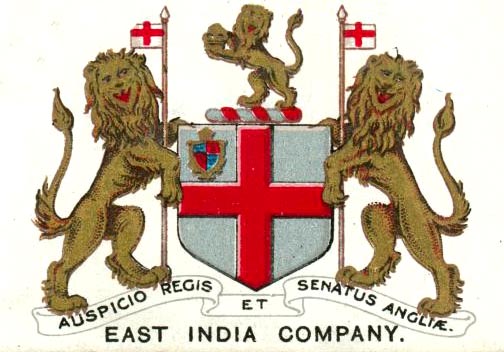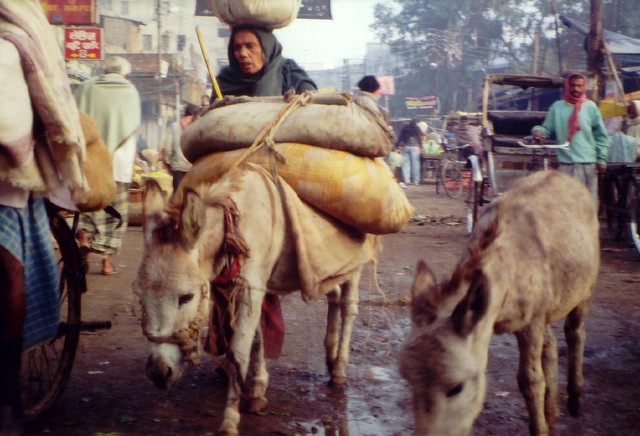Eknath Easwaran in the Preface of your text The Essential Gandhi has provided some crucial information towards understanding Gandhi’s whole nationalist movement.
ü Gandhi is officially the Father of the Nation.
ü Under his leadership India attained freedom from the British Empire.
ü Freedom was won through a 30-year campaign based on complete non-violence.
ü Gandhi was charged with being “a saint dabbling in politics.”
How India developed Britain


ü When Gandhi was born in 1869, India was under centuries of foreign domination.
ü For the last 100-odd years of this period the British East India Company exploited India.
ü This company was licensed by the Crown to pursue its fortunes by any means.
ü It drained the wealth of India into private hands.
ü The fortunes made were staggering even to contemporary eyes.
ü Historians observed Britain’s place in the Industrial Revolution was essentially financed by the loot of India.
ü The economic burden of this on India was equally staggering.
ü Within a generation cities became nightmarish extremes of wealth and poverty.
ü Calcutta, built by the Company, was the most notorious example.
ü The natives were forced to grow crops for export, not for local use.
ü They were taxed heavily for the privilege of doing so.
ü Hundreds of thousands of villages under the Company lost all capacity to sustain themselves.
ü Approximately 400,000 Indians died of starvation in the 2nd quarter of the 19th century.
ü An appalling 15 million died between 1875 and 1900, according to British figures.
Inevitable Rebellion in biting oppression: Indian Rebellion of 1857

ü The rebellion is also known as the 1857 War of Independence, India's First War of Independence, the Great Rebellion, the Indian Mutiny, the Revolt of 1857, the Uprising of 1857, the Sepoy Rebellion, and the Sepoy Mutiny.
In 1857, after a century of this kind of exploitation, a spontaneous insurrection occurred.
ü Impetus: The spontaneous mutiny of some native troops exploded into open rebellion.
ü It spread rapidly all over north India but lacked unity and coordination.
ü The Company put it down like a series of brush fires.
ü And a bloodbath of reprisal followed.
ü The tragedy haunted the rest of British rule.
ü For the British, it was clear that survival depended on keeping India divided.
ü It also meant putting down even a hint of insubordination immediately and ruthlessly.
ü Why? Well merely “to teach a lesson.”
ü The near success of an accidental rebellion also made it obvious in London that so precious a possession of India could not remain solely in commercial hands.

ü A few months later, with the wounds still raw and open, India became an imperial colony, “the jewel in the Crown,” and the British government stepped in “to do things right.”
ü Political, economic, social, and psychological domination deepened.
ü Brainwashed Indians believed they were inferior and learned to “ape the Englishman.”
ü The best and brightest went to London to be educated and returned to India still oppressed.
ü 12 years after India became a Crown colony, a boy named Mohandas Gandhi was born.
ü The timid, shy, average youth grew to change the world.

Remember in 1893 Gandhi accepted a job at an Indian law firm in Durban, South Africa. Gandhi was appalled by the treatment of Indian immigrants there, and joined the struggle to obtain basic rights for them. During his 20 years in South Africa he was sent to prison many times. Influenced primarily by Hinduism, but also by elements of Jainism and Christianity as well as writers including Tolstoy and Thoreau, Gandhi developed the satyagraha ('devotion to truth'), a new non-violent way to redress wrongs. In 1914, the South African government conceded to many of Gandhi's demands.
ReplyDeleteSATYAGRAHA AND PASSIVE RESISTANCE Compiled by Rachelle Drouin
ReplyDeleteApartheid was prominent and Gandhi soon learned that anyone whose skin was not white was treated as an inferior, second-class citizen. He was appalled by the denial of civil liberties and political rights to Indian immigrants to South Africa. He became a successful lawyer and a leader of the Indian community, involving himself in the fight to end discrimination against South Africa's Indian minority.
In 1906, Gandhi initiated his Satyagraha movement against the Natal government -- a government that was trying to pass an Ordinance to disenfranchise Indians living in South Africa.
Gandhi explained that Satyagraha is "a relentless search for Truth and a determination to search for Truth. Satyagraha is an attribute of the spirit within. Satyagraha can be described as an effective substitute for violence."
On September 11, 1906, Indians gathered to discuss ways to challenge the Ordinance. Gandhi proposed to them the idea of facing violence with non-violence. He drew from the likes of Tolstoy, Ralph Waldo Emerson, John Ruskin, Annie Besant, William Hunter, Henry David Thoreau, and Jesus for inspiration and began to teach his method of passive resistance and of fighting for truth and justice with suffering.
At the time, Gandhi said there were 2,000 participants against a nation capable of crushing them. He warned those at the September 11, 1906 meeting that the pursuit of Satyagraha might mean imprisonment: he himself had been incarcerated and harshly beaten several times. Gandhi also warned also that Satyagraha may cost participants their lives. Yet, all who attended the meeting pledged to oppose the Ordinance with non-violence, whatever the provocation.
In 1914, Gandhi secured an agreement from the Natal government that promised the alleviation of anti-Indian discrimination. As a result of Gandhi's campaigns, the South African government made a number of concessions to the Indian people living there: the honor of South Africa was saved and a new history written by the Satyagrahis.
After the victory of 1914, Gandhi decided to focus his attention on improving life in his native India. He returned to India in 1915 and discovered that his ideology was well received. He soon found himself with many followers who themselves regularly practiced passive resistance.
Eknath Easwaran (Preface of The Essential Gandhi) noted:
ReplyDelete“Gandhi was never theoretical. He learned by doing. Satyagraha continued to be refined in action all his life; he was experimenting up to the day he was assassinated. But the essentials are present from the very beginning in South Africa.”
It is important to note that whereas some historians may deem satyagraha as passive, Easwaran insisted, ‘Clearly there is nothing passive about this kind of resistance.’ And Gandhi himself said, as Easwaran pointed out, “The non-violence of my conception is a more active and a more real fighting than retaliation, whose very nature is to increase wickedness.”
Easwaran stated, ‘That is the point: violence only makes a situation worse. It cannot help but provoke a violent response. Strictly speaking, satyagraha is not “nonviolence.” It is a means, a method.’
He added, ‘satyagraha may be hardest to grasp intellectually, nonviolent action means voluntary suffering….the task of satyagraha was to make that suffering visible. Then, sooner or later, opposition had to turn to sympathy, because deep in everyone, however hidden, is embedded awareness of our common humanity.’
Read more about satyagraha on pages 77-80.
Review Questions
1.Using your own words, define satyagraha, (3 marks)
2.Was satyagraha a passive or active form of resistance? Justify.